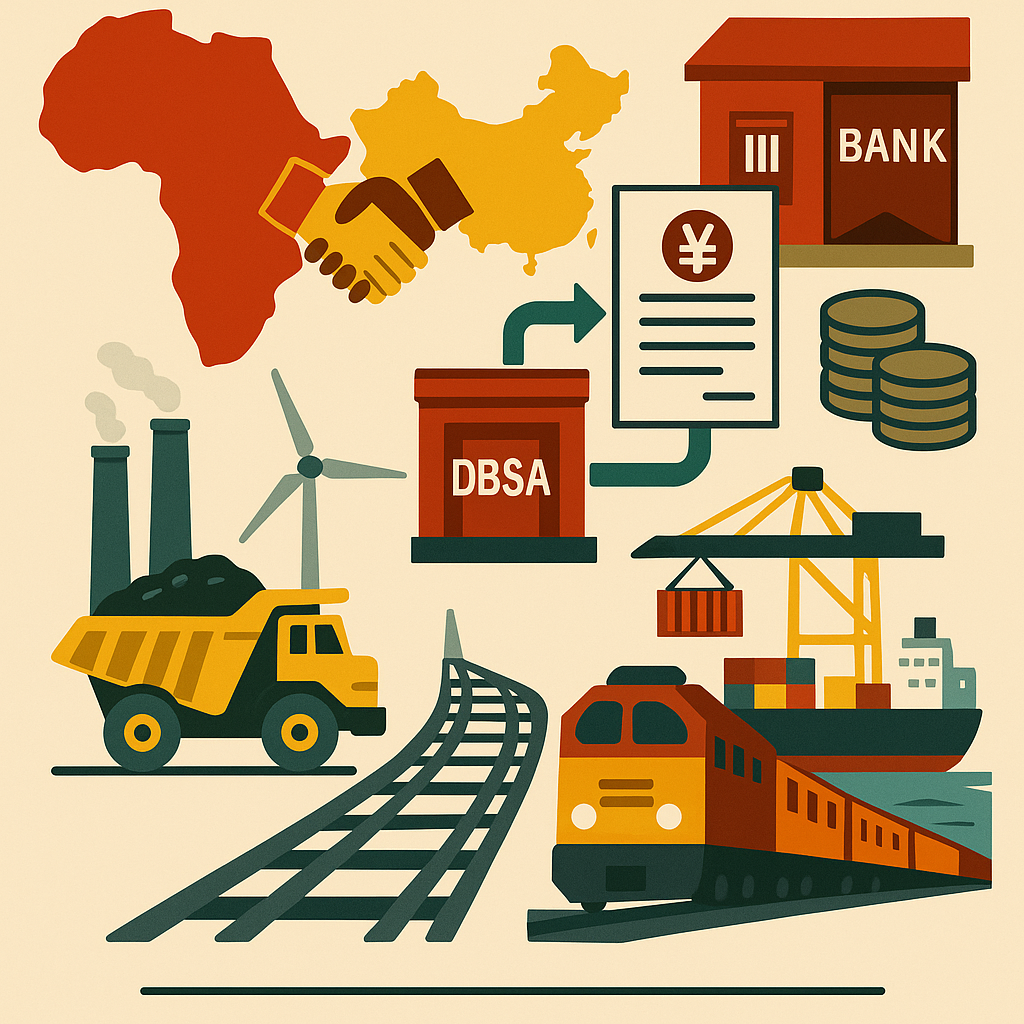China’s engagement with Africa is entering a new phase, moving beyond traditional trade to more strategic partnerships focused on infrastructure and finance. July 2025 has brought several key developments that highlight this deepening relationship, especially in how both regions collaborate to fund and build long-term development assets.
One of the most notable milestones this month is the signing of a yuan-denominated loan between China Development Bank (CDB) and the Development Bank of Southern Africa (DBSA). This first-of-its-kind agreement, valued at approximately 2.1 billion yuan (about USD 290 million), marks a move toward local currency financing and reduced dependence on the U.S. dollar. More importantly, the loan is targeted toward essential development sectors such as energy, transportation, sanitation, and manufacturing across Southern Africa. It reflects a shift in China’s financial approach—supporting projects that are both practical and sustainable.
In West Africa, Guinea’s bauxite exports have surged to meet Chinese demand. Between January and June 2025, the country exported nearly 100 million metric tons, a 36% increase from the same period in 2024. Chinese companies are central to this growth, handling more than 60% of the volume. Guinea’s expanded port infrastructure—featuring at least nine active terminals—has enabled this increase. Meanwhile, two major developments are underway: the Simandou iron ore mine and the Transguinean Railway, a 625 km rail link that will significantly boost the country’s capacity to move minerals to the coast. These projects are being developed through Chinese-African partnerships aimed at unlocking long-term economic benefits.
Beyond large-scale projects, China is adopting a more localized, partnership-based infrastructure model across the continent. Recent strategies emphasize public-private partnerships (PPPs) and “small but impactful” initiatives rather than massive state-backed projects. This approach helps reduce debt risks while empowering African governments to co-invest in development. It also reflects a shared commitment to economic cooperation that goes beyond construction contracts to joint ownership and capacity-building.
Importantly, these developments suggest a shift in China–Africa relations from transactional to transformative. African governments are no longer simply recipients of aid or infrastructure—they are becoming co-developers and negotiators in long-term, strategic projects. With local financing mechanisms like yuan-based loans, enhanced logistics, and more regional control over infrastructure, the China–Africa alliance is gaining maturity.
While there are still challenges such as governance, transparency, and local engagement—this evolving partnership offers a promising path forward. If managed wisely, it could help Africa close its infrastructure gap while fostering economic independence, regional integration, and sustainable growth.
Sources
- Global Times. (2025, July 9). China and South Africa sign first yuan loan to fund African infrastructure. Retrieved from https://www.globaltimes.cn/page/202507/1337984.shtml
- Reuters. (2025, July 4). Guinea bauxite exports up 36% to 99.8 million tons on Chinese demand. Retrieved from https://www.reuters.com/world/africa/guinea-bauxite-exports-up-36-998-million-tons-chinese-demand-2025-07-04


